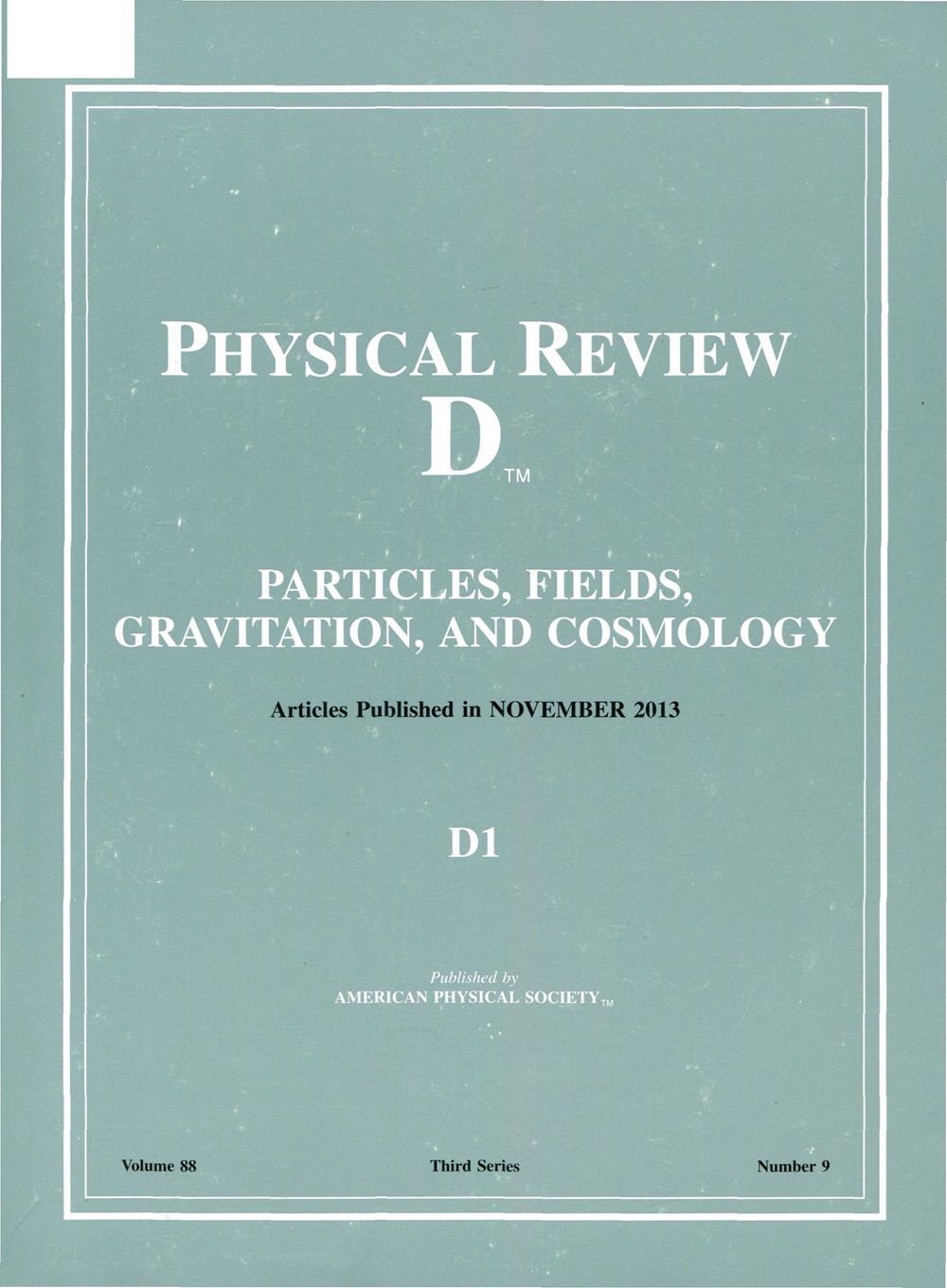任意张量拉格朗日量的粒子谱
IF 5.3
2区 物理与天体物理
Q1 Physics and Astronomy
引用次数: 0
摘要
我们提出了er软件,用于有效地计算任何(例如,高秩)张量场理论在olfram语言中的粒子谱的质量和能量。用户必须提供一个拉格朗日密度,它在闵可夫斯基真空周围的场中二次展开,在耦合系数中是线性的,否则是由偏导数和闵可夫斯基度规建立的。Er自动计算自旋投影算子,饱和传播子,裸质量,有质量和无质量极点的残数,以及根据耦合系数的整体统一条件。对源电流和测量对称总数的约束是作为副产品产生的。我们提供了标量、矢量、张量和规范引力理论的例子。每一个例子,包括高自旋修正引力理论的谱,都可以在个人计算机上在几分钟内得到。该软件还被并行化以用于高性能计算资源。最初的版本允许从最高等级为3的字段构造奇偶保持运算符:该功能将在未来的版本中得到扩展。Er是对XCT项目的贡献。本文章由计算机程序翻译,如有差异,请以英文原文为准。
Particle spectrum for any tensor Lagrangian
We present the er software for efficiently computing the mass and energy of the particle spectrum for any (e.g., higher-rank) tensor field theory in the olfram anguage. The user must provide a Lagrangian density which is expanded quadratically in the fields around a Minkowski vacuum, is linear in the coupling coefficients, and otherwise built from the partial derivative and Minkowski metric. er automatically computes the spin-projection operators, saturated propagator, bare masses, residues of massive and massless poles, and overall unitarity conditions in terms of the coupling coefficients. The constraints on the source currents and total number of gauge symmetries are produced as a by-product. We provide examples from scalar, vector, tensor, and gauge theories of gravity. Each example, including spectra of higher-spin modified gravity theories, may be obtained on a personal computer in a matter of minutes. The software is also parallelized for use on high-performance computing resources. The initial release allows for parity-preserving operators constructed from fields of up to rank three: this functionality will be extended in future versions. er is a contribution to the xct project.
求助全文
通过发布文献求助,成功后即可免费获取论文全文。
去求助
来源期刊

Physical Review D
物理-天文与天体物理
CiteScore
9.20
自引率
36.00%
发文量
0
审稿时长
2 months
期刊介绍:
Physical Review D (PRD) is a leading journal in elementary particle physics, field theory, gravitation, and cosmology and is one of the top-cited journals in high-energy physics.
PRD covers experimental and theoretical results in all aspects of particle physics, field theory, gravitation and cosmology, including:
Particle physics experiments,
Electroweak interactions,
Strong interactions,
Lattice field theories, lattice QCD,
Beyond the standard model physics,
Phenomenological aspects of field theory, general methods,
Gravity, cosmology, cosmic rays,
Astrophysics and astroparticle physics,
General relativity,
Formal aspects of field theory, field theory in curved space,
String theory, quantum gravity, gauge/gravity duality.
 求助内容:
求助内容: 应助结果提醒方式:
应助结果提醒方式:


